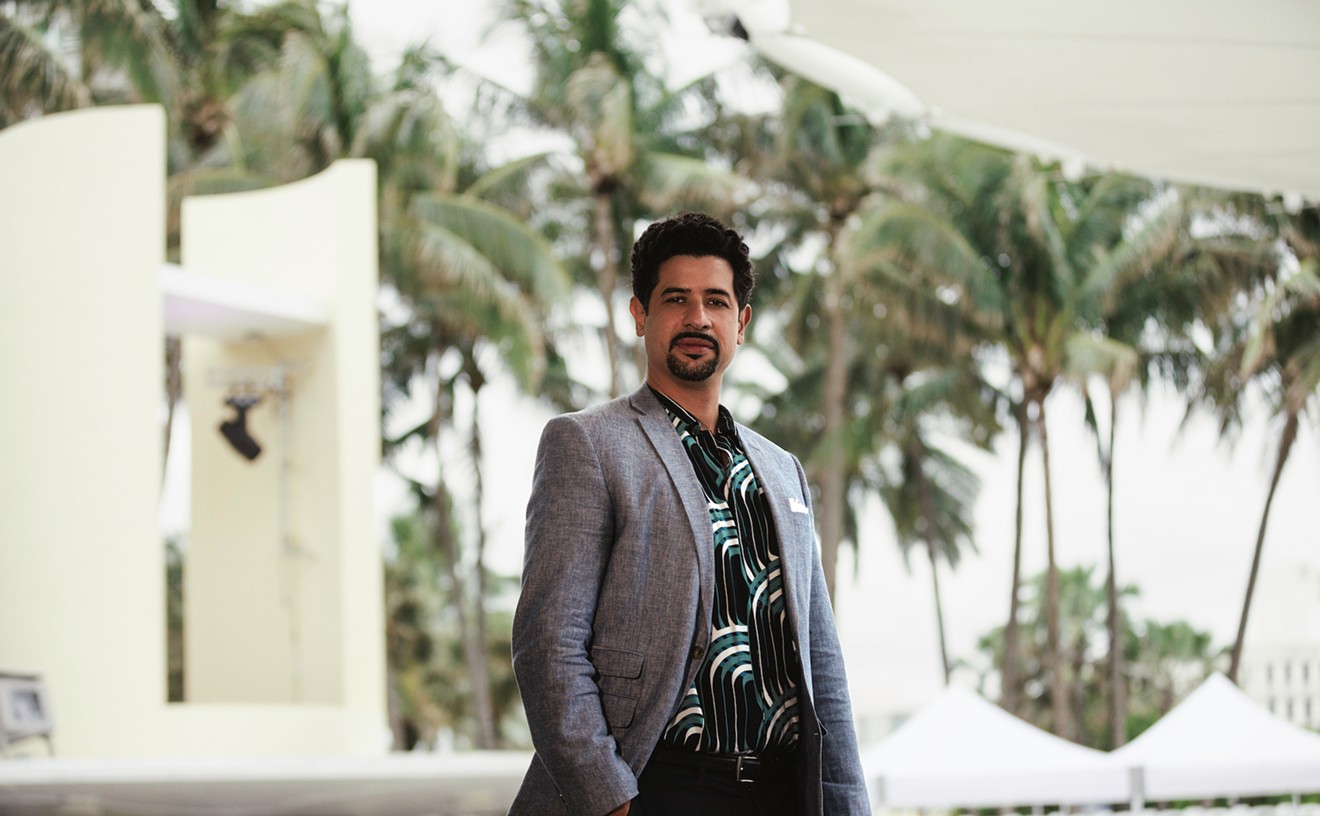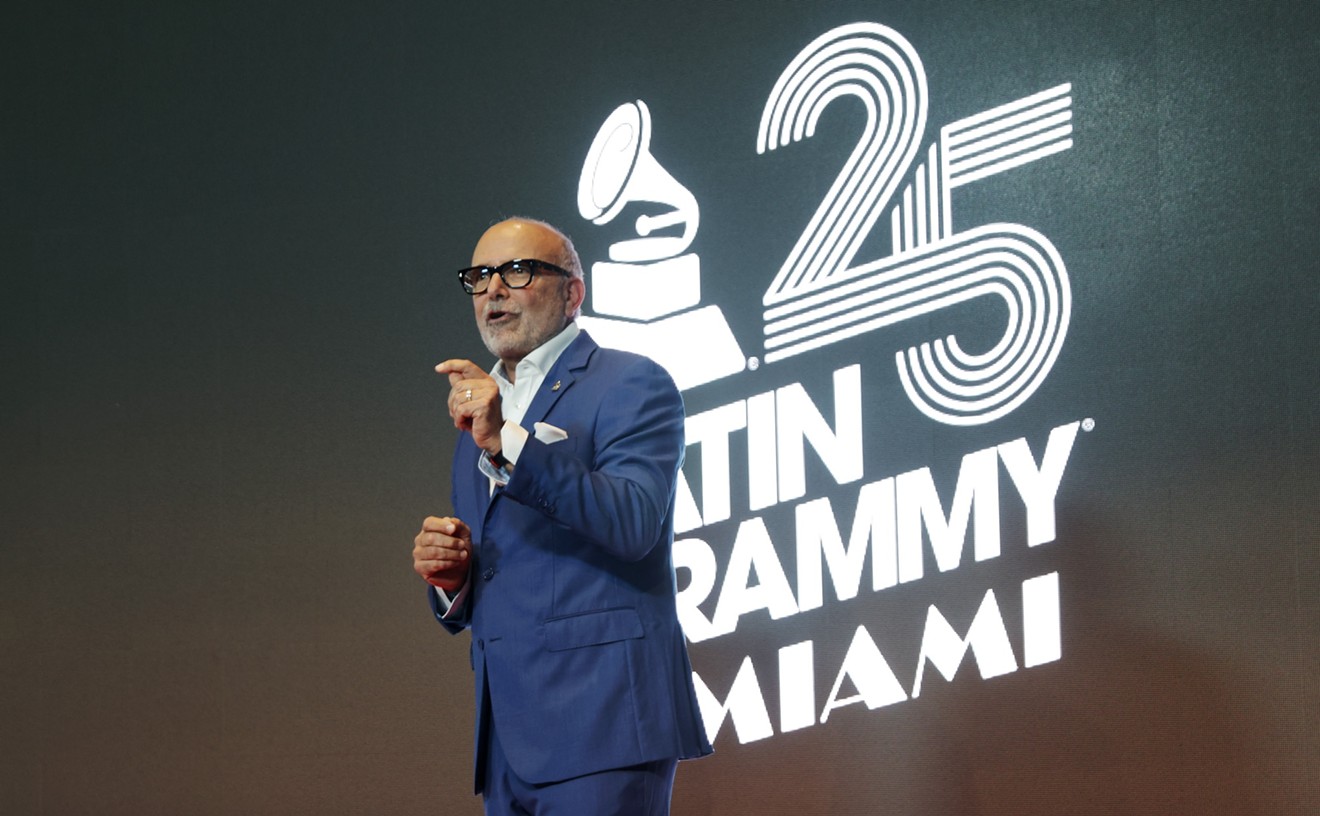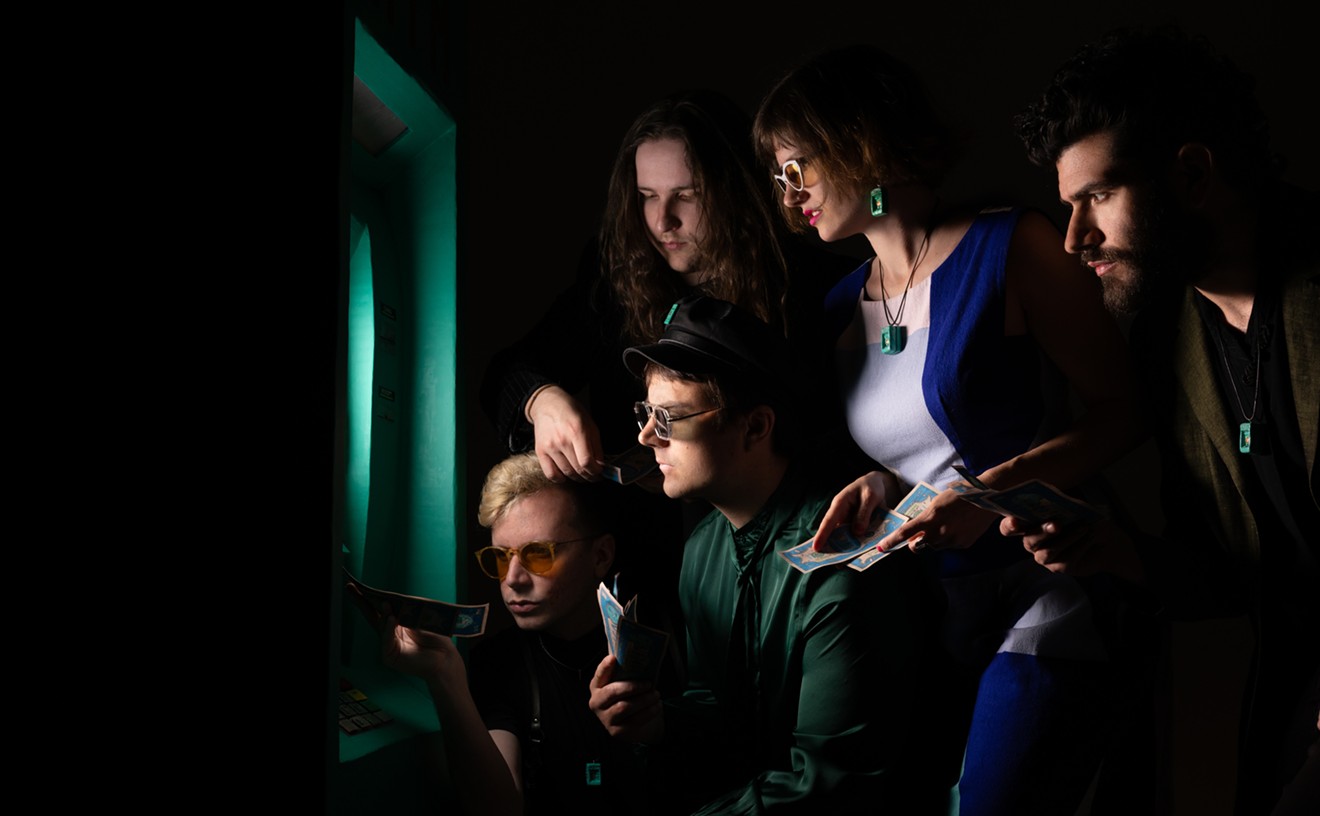Once a week, the North Miami-based rapper Seein (a.k.a. Gary Mason) pays Umoja a visit. "I just park my car to have a look around and it breaks my heart," the 28-year-old says. "Then I take out my notebook, and I start writing my rhymes. My purpose is to serve as the people's voice."
In a city better known for producing hip-hop artists who glamorize strip joints and flaunt luxurious cars, Seein has distinguished himself as a street poet with a social conscience. His self-titled debut EP keeps the focus on the downtrodden, not the upscale.
"Seein looks at life a little bit deeper than most rappers," observes DJ Self Born, a popular spinner in Miami Beach clubs. "His music is introspective, like the old-school rappers. He lets you in into the real world."
Twenty years ago, during the early days of hip-hop, New York rappers like KRS-One and Big Daddy Kane captured the nation's attention by writing rhymes that narrated the harsh realities of urban ghettos. For a time, hip-hop music was commonly thought of as the voice of the hood, or as Chuck D of Public Enemy once put it, "the CNN of the streets."
Nowadays things are different. And for better or worse, Miami seems to represent ground zero for the new uber-branded hip-hop generation. The city's international rep as a playground for the rich has made it a symbol of sunny decadence for today's top urban acts.
Seein, though, would like to paint a different picture of Miami.
"I was driving down Dr. Martin Luther King Jr. Boulevard," he says. "The street was full of liquor stores and neglected apartments. It was really depressing, but right in the middle of everything, I noticed a schoolyard with a group of little kids playing around, and that gave me hope, you know. It reminded me that Dr. King said our future lies with our younger generation."
Motivated by this experience, Seein penned the song "MLK Boulevard," which he intends to include on his forthcoming LP. In the lyrics Seein engages in a hopeful conversation with Dr. King himself about the fate of Miami's black underclass: "I see them building the same bridges that you were seeing in your vision/No lines of division, no prejudice/No evidence of racism/No trace of hate in them."
Growing up in the Vanderveer Projects of Brooklyn, he was captivated by the daily hustle of the streets. "I always wanted to be rapper," he says. "And started writing rhymes around the time that I first heard Run-D.M.C., when I was about ten years old."
Searching for a better life for his then-two-year-old son, Stephan, Seein left his hometown for the relative calm of Miami in 1999. He was able to find work in North Miami's grueling labor pools. "It's really hard work, but you get paid on the same day," says Seein, a tall man with long cornrows neatly bound in a ponytail. "You show up first thing in the morning, then they [the recruiters] pick you up from a group of workers. I ended up doing a lot of manual labor, construction stuff."
Seein spent his free moments at the recording studio of his friend Joe Athis. Like most of his peers in the rap world, he was captivated by the gangster mystique. "In that period, our music was negative," Seein says. "We had no depth to our lyrics; they were about women and money."
Nevertheless in 2001 Seein and his friends managed to get a coveted gig performing at the birthday bash of one the top MCs in the nation, the infamous DMX. "It was at a place called Club Goddess in Miami Beach," he recalls. "DMX saw us perform, and told us to keep it up. That was the first time that I felt the music thing could really happen for me. It looked like a reality."
The birth of his second child, a daughter named Ajahnae, changed everything. "Her birth was a wake-up call and it gave me another perspective," Seein explains. "I didn't want to be a gangster rapper anymore. I needed to be a good role model for my kids, and I wanted to make music that they could listen to. That year I also found God."
Seein started attending the Gateway Family Fellowship, a nondenominational church in North Miami. As part of his new church duties, he began volunteering at the outreach program ROC Jams, providing food and clothing to homeless families in Miami's most impoverished areas.
Unbeknownst to Seein, next door to his church an indie music studio was being built by a fellow New York transplant, Billy Monahan. "One day after the Sunday service, my minister took me next door to see this new studio," Seein says. "I was introduced to Billy, and I told him that I wanted to use hip-hop as a way to contribute to my community."
Impressed with his lyrical skills, Billy Monahan offered the aspiring MC a record deal with his new label, Cleva Records. "I didn't want to do Christian rap," Seein says. "I didn't want to just preach to the choir. I wanted to reach the streets."
The lyrics to a track like "Hard Life," for instance, detail his daily battle — not to acquire toys, but to provide for his family. "Still struggling, I'm trying to keep my head above the water," Seein intones. "I'm trying to be the best supporter, for my son and for my daughter/Trying to be a good example, trying to make the money legal."
Beyond the lyrics, the track showcases Seein's multilayered arrangements. A tender, cascading piano melody — reminiscent of Marvin Gaye's "What's Going On" — is set atop throbbing bass and vigorous, ricocheting percussion tracks to create a euphoric vibe that wouldn't sound out of place at some of South Beach's tried and tested hip-hop hotspots, like Prive or B.E.D.
For the past year, Seein has been busy recording tracks for a full-length disc in the studio, which Monahan hopes to release on Cleva sometime in the next few months. For now, Seein is touting his EP and playing shows at local events such as the Calle Ocho festival.
Jalen James Acosta, a Miami-based producer who found international success with the tropical group Toke de Keda, believes the time might be right for a local MC such as Seein.
"There are not many rappers in Miami like him," Acosta says. "His song öHard Life' opened me up to his style. Having the delivery and the flow is only one aspect. But it's another thing when you actually have [a rapper] with something to say."
Seein himself is well aware that his socially conscious approach puts him at odds with most of the MCs in Miami's ultracompetitive hip-hop scene, where stars such as Rick Ross and Trick Daddy stand at the top of the heap.
But he remains optimistic. "I'm speaking to people in a way they haven't been spoken to in a long time," he says. "I have a purpose here in Miami, and it took me a lot of effort to find it. Now I got butterflies. I feel like I'm approaching a benchmark in my life, like I'm walking into my destiny."










